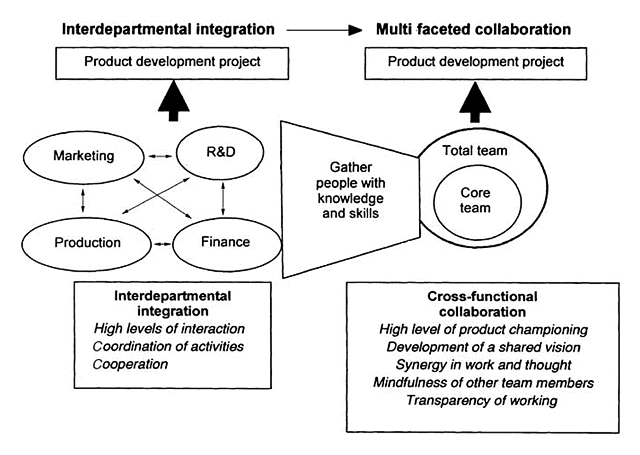FOOD
PRODUCT DEVELOPMENT
Mary Earle, Richard Earle and Allan Anderson |
| Loading
|
levels |
|
||||
|
|
|
Part
3, Chapter 6
Managing the product development process 6.2.5 Important factors in management levels There are three important factors to recognise in these four different types of management.
Firstly there is a need for championing: strategic championing at the directors/top management level, organisational championing at the product development manager level, and product championing at the project leader level. Secondly, decision making needs to be spread throughout the three groups and to be clearly defined. There is a need for decision making at all levels and not only at top management level. There is nothing more restrictive in product development than all decisions having to be made by one person; also it tends to slow development because there is endless reporting and decision making. Decision making is a collaborative activity between all levels of management. Thirdly, collaboration is an active aim of product development management. Collaboration is much more than cross-functional integration, it is the active working together of people from different disciplines, different functional departments, and different levels of management in product development, all with common aims for product development as shown in Fig. 6.3.  Fig. 6.3 Comparison of integration and collaboration in product development (Source: After Jassawalla and Sashittal, 1998). (- click to enlarge) Cross-functional collaboration includes an equal stake and responsibility for the outcomes, and a willingness to understand the other people's viewpoints so that they can be blended to give higher levels of combined knowledge in the product development. Such collaboration involves synergy in thought and action, which leads to outcomes from the product development exceeding the capabilities of the individual participants in the PD Process (Jassawalla and Sashittal, 1998). Collaboration can be hard to achieve in radical innovation where uncertainty leads to tensions between people, with different functional groups blaming the others for delays, poor product qualities and increased costs. It is much easier in incremental product development where the risks of failure are much less and many activities become routine. Stage-specific collaboration is more likely to lead to new product success, rather than integrating all functions during all four stages of the PD Process, with the three functions - R&D, manufacturing and marketing - playing the central role in turns (Song et al., 1998).
|
|
 |